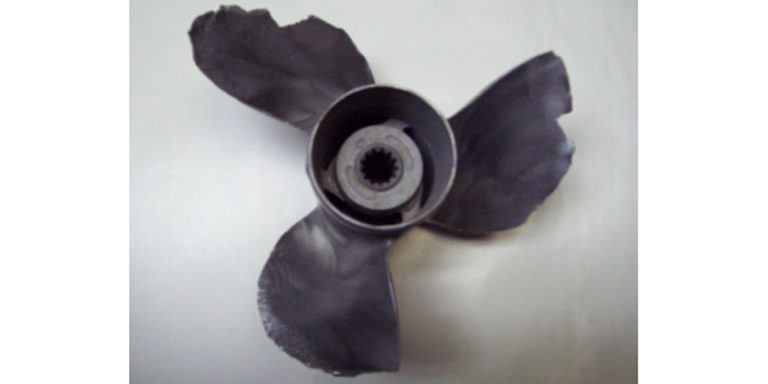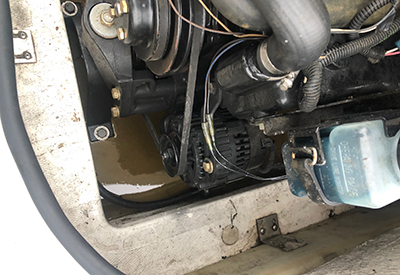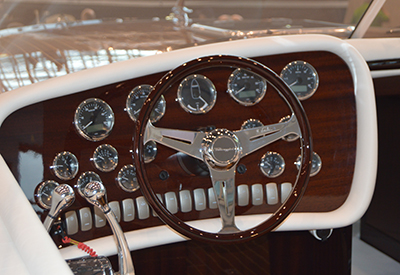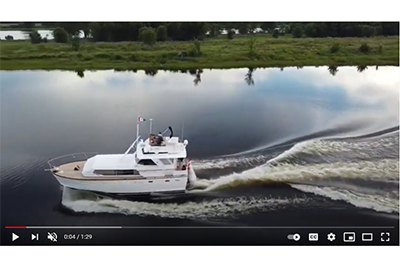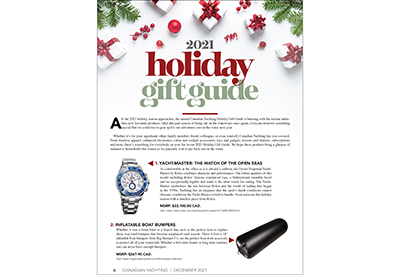Ask Andrew – Andrew’s Almost Ultimate Spring Commissioning Checklist
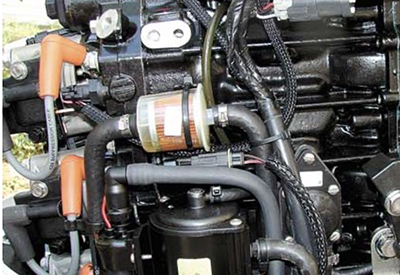
Mar 23, 2023
fuel filters should be reviewed/replaced per manufacturer’s recommendations
It’s that time of year again. The groundhog has been consulted, and we all anxiously wait for the boating season to begin. Here’s a brief outline of maintenance items that you can check off your list when getting ready for launch:
Exterior
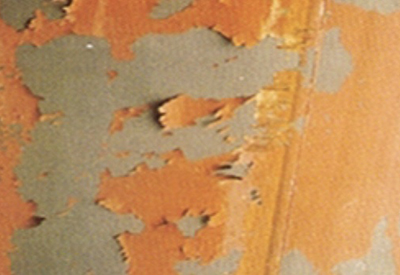
- Antifouling condition – it is lumpy or flakey? Is it patchy? Can gelcoat be seen beneath the paint? A light sand may be needed before touching it up, or applying a new coat
- Prop condition – Any damage from last year? Are the blades clean?
- Prop play – when moving the prop up/down or side-to-side, any play could indicate that the cutlass bearing should be evaluated and/or replaced.
- Hull above and below the water line: are there any blisters, distortion, or cracking?
last year’s antifouling is peeling and should be prepped to manufacturers recommendations before applying a new coat
- Leaks at hatches and windows – try running a garden hose on deck to see where gaskets and caulking have worn and require replacement.
- Dock and anchor lines – any frayed ends, strain, or wear? Lay out your anchor rode and check for any rot or damage
- Drain plugs – ensure that transom or garboard drain plugs are in place, with a high-quality sealant applied.
Hull blisters in gelcoat – these can be seen above or below the waterline
 Engine/Bilge
Engine/Bilge
- Engine intake sea strainer – ensure that not only is the strainer clean and clear, but that the lid creates a firm seal, allowing water to flow to the engine.
- through-hull seacocks – ensure that seacocks are lubricated well and that they open and close with ease
- test bilge pump and float switch – ensure that bilge-pumps cycle on and off correctly, and test to ensure that they can pump water overboard.
- Replace fuel filters – drain and replace water-separating fuel filters, as well as any engine mounted in-line filters.
- Drain and dispose of antifreeze used in the winterizing process – drain engine block and manifolds to ‘dewinterize’ the engine, while also protecting the environment
- Clean the bilge – this is important to do prior to launch not only as a maintenance task, but also to allow you to easily see if any water is collecting the bilge when the boat first hits the water.
- Add fresh bilge socks – add bilge socks or pads to any areas where lubricants or oils could leak into the bilge. These products are designed to absorb and separate any harmful substances from bilge water.
- test blowers and glow-plugs – blowers and glow-plugs should be tested prior to launch to ensure safe start-up.
- Test engine gauges, and warning lights and alarms – turn the key to ‘accessory’ to test to ensure that gauges function, and make note of any warning horns or alarms
Rigging
 chafed or worn running rigging should be replaced
chafed or worn running rigging should be replaced
- check all standing and running rigging and replace frayed, corroded and damaged parts
- lubricate turnbuckles and re-stock split rings
Trailers
- Trailers – perform any needed service on trailer tires (tire pressure and lugs torqued to spec), lights (tested and wiring protected), and brakes (top up fluid in reservoir, and ensure that emergency brakes work)
Safety
- Safety equipment – Transport Canada specifies the safety equipment requirements for vessels of various sizes, including lifejackets and flares. Ensure that you know the requirements for a vessel of your size and type, and ensure that all your equipment is up-to-date, accessible and ready-to-use.
- update chart plotter software – paper charts have been phased out over the last few years, putting more of an onus on boaters to ensure that software updates are completed in a timely way.
Electrical
- Test and charge the battery. Ensure that lead-acid batteries are topped up with fluid, and are adequately load tested and charged. Double check positive and negative connections, and torque battery nuts to spec
- Check the shore power pedestal – ensure that breakers are sized adequately for your vessel and that a GCFI test is performed to ensure that the dock infrastructure, the boat and the water between the two are protected from stray current.
- Test Onboard GFCI outlets – ensure that any 110v outlets onboard are GFCI protected and ensure that a test is performed on each outlet prior to launch
Every boat has its own equipment, set-up, and foibles. Because of this, this list is hardly comprehensive. I hope that it gives you a place to start in creating your own spring commissioning checklist to ensure that you’re ready for a safe and enjoyable season aboard.
 Andrew McDonald is the owner of Lakeside Marine Services – a boat repair/maintenance firm based in Toronto. Andrew has worked in the marine industry for 12 years and is a graduate of the Georgian College ‘Mechanical Techniques – Marine Engine Mechanic’ program.
Andrew McDonald is the owner of Lakeside Marine Services – a boat repair/maintenance firm based in Toronto. Andrew has worked in the marine industry for 12 years and is a graduate of the Georgian College ‘Mechanical Techniques – Marine Engine Mechanic’ program.
Questions or comments for Andrew? Email him directly via: askandrew@lakesidemarineservices.ca

